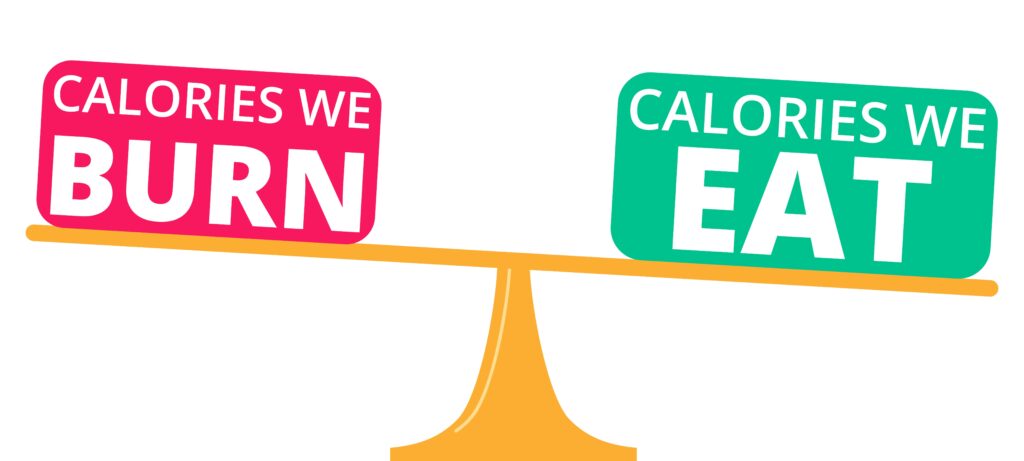Calories in vs. calories out – or CICO – is a concept that has been at the heart of countless diet plans, fitness regimens, and weight management discussions.
But what does it really mean, and how can you harness this fundamental principle to achieve your health and fitness goals?
In this article, we’ll explore the often misunderstood concept of calories in vs. calories out and provide actionable insights on implementing it for sustainable results.
Understanding the Basics:
Before diving into the practical aspects, let’s clarify what “calories in vs. calories out” actually means. At its core, it’s a simple equation:
Calories In (Food Intake) – Calories Out (Energy Expenditure) = Weight Change
Calories In (Food Intake): This represents the number of calories you consume through food and beverages. It’s what you put into your body. Four macronutrients account for the calories we eat every day.
Four Macronutrients
- Protein- 4 cal/g
- Carbohydrates- 4 cal/g
- Fat- 9 cal/g
- Alcohol- 7 cal/g
Calories Out (Energy Expenditure):
This encompasses the calories your body burns through various processes such as metabolism, physical activity, and even digestion. It’s what your body expends.
Weight Change:
If the result is positive (Calories In > Calories Out), you gain weight. If it’s negative (Calories In < Calories Out), you lose weight.
The Misconceptions:
The oversimplified interpretation of this equation has led to several misconceptions:
All Calories Are Equal:
Not all calories are created equal. The quality of the calories matters just as much as the quantity. Nutrient-dense foods provide essential vitamins, minerals, and satiety, while empty-calorie foods lack nutritional value. A great example of a nutrient dense food are whole foods such as fruits, nuts, whole meat sources, and whole grains. An example of an ‘empty calorie’ food would be alcohol and highly processed foods (chips, most fast food choices, hotdogs, etc).
Starvation Mode:
Many fear that reducing calorie intake too much will trigger a “starvation mode” where metabolism slows down. While metabolic adaptation can occur with extreme caloric restriction, it’s not as prevalent as once believed.
Eating less frequently:
All too often the assumption becomes, if I eat less → I will lose weight. Unfortunately reducing eating frequency encourages people to eat more at the meals they do get, which is quite counterproductive. Instead, I suggest eating more satiating foods that aren’t high in calories (lean meats, fat-free/low-fat dairy) and reducing high-fat foods as well as alcohol (if weight loss is the goal).
Implementing Calories In vs. Calories Out:
Understanding the concept is one thing; applying it effectively is another. Here’s how to implement it wisely:
Determine Your Maintenance Calories:
Calculate your daily maintenance calories based on your age, gender, weight, activity level, and goals. This serves as your starting point.
Set Realistic Goals:
Aim for a moderate calorie deficit, typically 300-500 calories below maintenance, to lose weight steadily without sacrificing muscle mass.
Choose Nutrient-Dense Foods:
Prioritize whole, nutrient-dense foods that provide essential nutrients and keep you feeling full longer.
Stay Active:
Incorporate regular physical activity into your routine. A mix of cardio and strength training can boost calorie expenditure.
Monitor and Adjust:
Track your food intake and monitor your progress. If necessary, make adjustments to your calorie intake and exercise routine. The easiest way to do this is to have data. Bodyweight and caloric intake data are two great ways to identify if adjustments need to be made.
Prioritize Sustainability:
Focus on making sustainable lifestyle changes rather than quick fixes. Consistency is key.

In conclusion, the concept of “calories in vs. calories out” is a foundational principle for weight management, but it’s often misunderstood. By grasping its true meaning and implementing it wisely through balanced nutrition and regular physical activity, you can achieve your health and fitness goals in a sustainable and enjoyable way. Remember, it’s not just about counting calories; it’s about making informed choices for your overall well-being.



